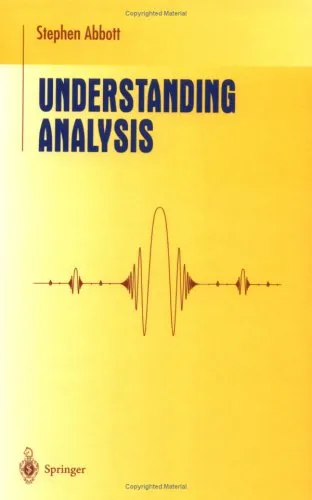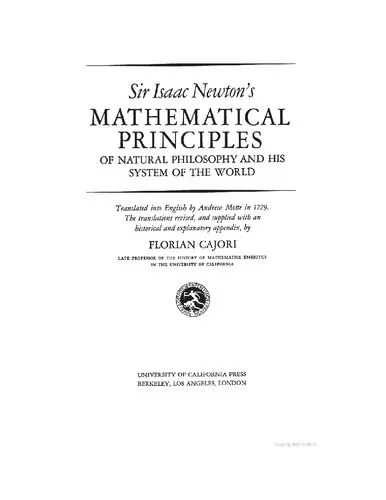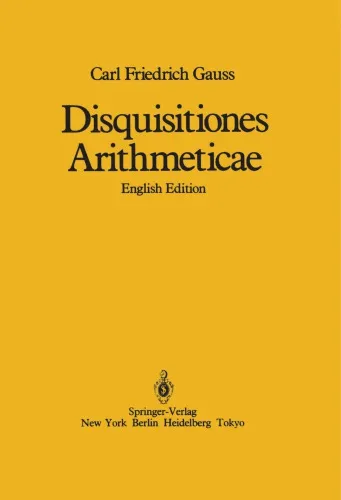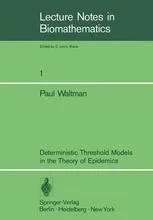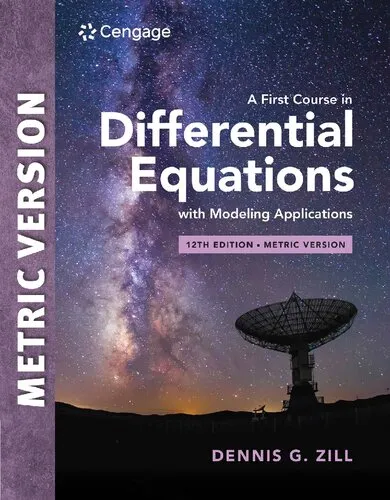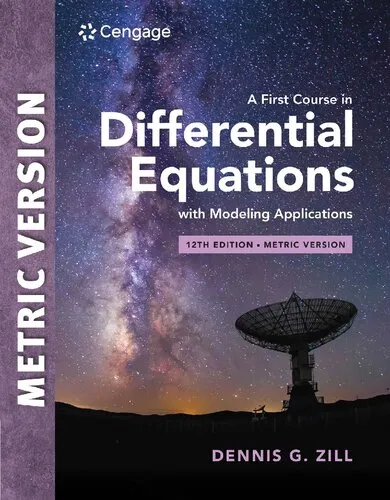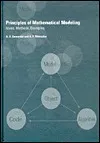Mathematical epidemiology of infectious diseases
4.5
Reviews from our users

You Can Ask your questions from this book's AI after Login
Each download or ask from book AI costs 2 points. To earn more free points, please visit the Points Guide Page and complete some valuable actions.Related Refrences:
Introduction to "Mathematical Epidemiology of Infectious Diseases"
"Mathematical Epidemiology of Infectious Diseases" by O. Diekmann and J. A. P. Heesterbeek is a seminal book that lays the foundation for applying mathematical modeling and analysis to the study of infectious disease dynamics. This book has become essential reading for epidemiologists, researchers, and practitioners seeking to understand how diseases spread, persist, and can be controlled in populations. The authors combine theoretical frameworks with practical applications, providing a unique perspective that bridges mathematics and public health.
The spread of infectious diseases like measles, influenza, HIV/AIDS, and more recently, COVID-19, has increasingly shown the importance of mathematical tools to gain insights into their dynamics. This book offers readers both a comprehensive introduction to the core concepts of mathematical epidemiology and a profound understanding of real-world disease control and prevention strategies. Through clear explanations, carefully designed models, and illustrative examples, the book demonstrates that mathematics is an indispensable tool in public health campaigns targeting infectious diseases.
Detailed Summary of the Book
At its core, the book explores how diseases are transmitted between individuals and within populations. The authors leverage systems of differential equations, as well as other advanced mathematical tools, to represent the spread of a wide range of infectious diseases. In particular, they focus on compartmental models, including the widely used SIR (Susceptible-Infectious-Recovered) model and its variants.
The book begins with fundamental concepts such as the basic reproduction number, R0, and explains its critical role in determining whether an epidemic will grow or decline. Different chapters delve into key epidemiological phenomena, such as herd immunity, threshold conditions for outbreaks, and the impact of vaccination programs.
Aside from theoretical insights, the book presents practical applications, demonstrating how the models are used to estimate disease parameters, predict outbreak scenarios, design optimal intervention strategies, and evaluate the effectiveness of public health measures. Real-world case studies are utilized to solidify the concepts, making the material accessible and relevant for readers from both mathematical and biological backgrounds.
Key Takeaways
- The basic reproduction number, R0, is foundational to understanding the potential spread of an infectious disease.
- Compartmental models, such as SIR and SEIR, are essential tools for modeling disease transmission dynamics.
- Herd immunity is achieved when a critical proportion of the population becomes immune, interrupting the chains of transmission.
- Vaccination and other intervention strategies can be planned more effectively through mathematical models.
- Mathematics provides a precise and predictive framework for tackling public health challenges associated with infectious diseases.
Famous Quotes from the Book
"Mathematics cannot prevent the outbreak of an epidemic, but it provides critical insights into controlling its course."
"An epidemic is both a biological and a societal event, and understanding its trajectory requires tools from both domains."
"The basic reproduction number R0 may be simple to define but contains immense complexity in its implications."
Why This Book Matters
The significance of "Mathematical Epidemiology of Infectious Diseases" lies in its ability to connect mathematical theory to real-world challenges in public health. With infectious diseases frequently crossing borders in this age of globalization, the ability to predict and manage outbreaks has become invaluable. This book equips public health officials, epidemiologists, and mathematical modelers with the tools they need to make informed decisions about disease prevention and mitigation strategies.
Moreover, the book is written at an opportune time, addressing the dual needs of rigor and accessibility. While it doesn't shy away from complex mathematics, it also emphasizes clarity and practical applications. It ensures that its insights are understandable and actionable for a broad audience, from students to seasoned researchers.
As the COVID-19 pandemic has made evident, mathematical epidemiology plays a critical role in shaping responses to global health crises. This book empowers readers to approach these challenges methodically and scientifically, armed with the analytical tools and frameworks necessary to make a meaningful impact on health outcomes.
In conclusion, "Mathematical Epidemiology of Infectious Diseases" is a thought-provoking and indispensable resource for anyone seeking to use mathematics as a tool for understanding and combating the spread of infectious diseases. With its clear exposition, actionable insights, and multidisciplinary approach, this book continues to remain relevant in the ever-evolving field of epidemiology.
Free Direct Download
You Can Download this book after Login
Accessing books through legal platforms and public libraries not only supports the rights of authors and publishers but also contributes to the sustainability of reading culture. Before downloading, please take a moment to consider these options.
Find this book on other platforms:
WorldCat helps you find books in libraries worldwide.
See ratings, reviews, and discussions on Goodreads.
Find and buy rare or used books on AbeBooks.
1409
بازدید4.5
امتیاز0
نظر98%
رضایتReviews:
4.5
Based on 0 users review
Questions & Answers
Ask questions about this book or help others by answering
No questions yet. Be the first to ask!


